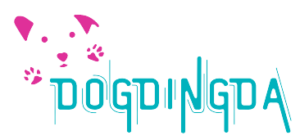Learn how to make a stylish and durable leather dog collar with our step-by-step guide. Discover the tools and materials needed, as well as tips for personalizing your creation to suit your furry friend’s personality. Follow our instructions and create a one-of-a-kind accessory that will keep your pup looking and feeling great. Start crafting your leather dog collar today!
I built my dog’s first leather collar two years ago. Many people then questioned my decision not to purchase a leather dog collar. To be completely honest, I did! I bought a dozen or so leather dog collars, but neither my dog nor I were happy with them. I vividly recall spending hundreds of dollars on one of those collars.

I assumed that because it was so pricey, it must be amazing; nevertheless, it wasn’t amazing in the way I had anticipated. Instead of being casual dog clothing, the collar appeared more like a demon leash wrapped around my dog’s delicate neck.
Since then, I have created and manufactured my leather dog collars. Yes, it requires more work than simply ordering one, but trust me when I say that a custom leather collar is well worth the extra effort.
How Are Homemade Leather Collars Better Than Those Sold in Stores?
Exceptional Designs and Customization
Many leather collar designs are available on the market, but none of them are a perfect replica of your imagination. On the other hand, if you construct your leather dog collar, you may design and modify it to suit your dog’s personality and appearance.
Cost-effective (If You Already Have the Required Tools)
DIY items are typically less expensive and easier on the wallet. Although leather is expensive, constructing your own leather collar can significantly reduce the final cost.
Absolute Safety
A leather collar arrives at the store after undergoing chemical-heavy tanning, coloring, processing, etc. procedures. Even though the manufacturer states that these chemicals are safe for your dog, they can hurt him.
For instance, your dog can be allergic to the substances used to eliminate the ruined leather scent. Similarly, the dye may contain allergies that endanger your small dog’s life.
Now tell us, can’t you get some time off to devote to your furry friend’s wellbeing? Without further ado, let’s begin our detailed instructions for manufacturing leather collars now that we are aware of your response.
How to Create a Leather Dog Collar
It is easy and enjoyable to create a stylish leather dog collar. All you need to do is adhere to the instructions:
Assemble resources and tools
The ideal site to purchase all the necessary tools and supplies in North America is Tandy Leather, as these people maintain a large inventory of leather items. Additionally, you can get these supplies from an area art and craft store or on Amazon. The nicest feature is constructing at least three dog collars with a single purchase.
Materials All the parts that will go into making your leather dog collar is listed in this material list. It contains:
- Buckle Genuine leather straps are the ideal choice because of their extreme durability. However, if your tiny canines are less aggressive, you can choose lighter types.
- Rivet D rings
- Illinois screws
- Sealant Decorative studs Leather dye (optional)
- conditioner for leather (beeswax, cream conditioner, oil)
Tools
You should buy most of the tools needed to build a leather collar because they are not often found in every household. We advise you to look around your area or social circle and borrow them from a leather worker.
You can also buy used tools if you consider starting your own tiny leather collar business. Such tools are not only cost-effective, but they can also be of long-term use to you. These tools include:
- Shaver for leather
- Edge smoother
- leather hammer
- punch a hole
- circular hole punch
- strap cutter for leather
- Sharp scissors or a leather punch
- Cleaning rugs after dyeing with brushes and sponges
- Gloves
- Ruler
- Rivet installer
- Skiver
- Screwdrivers and pliers
- Leather stamp and a tack hammer
A generous length of leather should be cut and ready.
Taking the Leather Off
If you’ve bought leather strips that are already cut, all you need to do is measure your dog’s neck and adjust the collar length. If you’ve purchased a wide leather sheet, fetch the strap cutter, adjust its width to match the width of the collar and buckle, and run it along the edge of the sheet. It’s time to measure the dog collar after cutting a strap out of the metal sheet or piece of hide. To do this, obtain a measuring tape and place it around your dog’s neck where the collar should be.
Trainers say that the collar should lay high around the neck, under the jaw, and behind the ears. Your dog won’t be able to escape from it because of this. To ensure the collar is not tight, utilize the two-finger formula. Cut the leather strap to a generous length at the end. For instance, you should cut a 10-inch long strap if your measurements are 6 inches. , you can always reduce length but never add to it.
Getting Ready for the Leather
The strap must then be prepared to become a collar after being cut. To begin, use the edge sleeker to smooth out the edges. By doing this, you may prevent the collar from irritating your dog’s neck while also improving the collar’s appearance and quality of construction. You must therefore coat it with a dye or waterproof sealer. To avoid ruining the collar’s aesthetic appeal, the sealant should, however, match the color of the original leather.
Additionally, you must use specific brushes to paint the edges; otherwise, the leather may become damaged and blotchy due to the dye smudging. Finally, spread the leather conditioner over the entire set of straps to prolong their useful life.
Punch holes in the collar and mark the holes.
After cutting and prepping the leather strip, it is time to create the holes necessary to transform it into a genuine dog collar. Make five to six holes in the collar’s end where the buckle pin will go. On the other hand, the collar’s other end will be converted into the buckle’s end.
Make six holes behind the buckle end at predetermined intervals. When the strap is folded over, the three holes will combine to form one hole at the end. Chicago screws should then be used to fasten each pair of holes. You can also create oblong slots to attach tags and leashes between these holes.
The collar is cleaned, colored, and sealed.
After making the necessary holes in your collar, you must clean, dye, and seal it before fastening the collar hardware. Remember that this process must be completed before attaching the hardware, or the metal pieces risk being susceptible to corrosion. Start cleaning because the collar must have gathered a grime and body oils coating while being cut, prepared, and hole-punched. As a result, clean the collar by wiping it with a fabric gently dampened with leather deglaze.
Your collar will be ready for painting once it has dried. You can use any oil paint you like, but I prefer natural brown dyes because they look stylish and will never go out of style. Let the first coat dry before adding the second. Apply a layer of waterproof sealer to seal the surfaces once all the paint layers have been applied.
Buckle, D-Rings, and rivets should be added.
The final stage is to put all the parts together. Through the oblong slot, insert the buckles into the corresponding end. Three D rings will fit behind the buckle, each separated by a Chicago screw.
The double D-rig and single D-rings will go after the initial metal D ring to attach the leash and tag. Once finished, give the collar end whatever form you like, such as round or square.
Dress up the collar (Optional)
If you don’t like a plain leather collar, you can embellish it by adding other decorative pieces or stamping designs (studs, spikes, etc.). However, since a puppy’s skin is so thin, I won’t advise utilizing spikes or studs with sharp ends on the collar.
Even if you intend to use your homemade leather collar for training, it is preferable to build it as a tactical dog collar or a no-pull dog collar so that your dog can also wear it as a standard collar. The simplest and most pleasurable way to pattern leather is via stamping.
To begin, lightly dampen the collar with a sponge soaked in water. A hammer or mallet should strike the collar with the stamping tool. No one is here to limit your imagination so that you can achieve your chosen outcome. In addition to stamping way too articulate designs, you can choose cute options like stamping lovely paw prints, your pet’s name, or any other fun shape.
FAQs
There is no set rule regarding the types of leather that may or may not be used. Genuine, full-grain leather makes the best leather collar because it is the strongest and lightest and gives your dog’s neck a plush feeling.
Bridle leather is also said to be excellent for manufacturing belts, collars, and leashes since it is a tough, difficult-to-temper leather that can survive most weather exposure.
Keep in mind that weight and thickness are inversely proportional. As a result, you should choose leather thickness based on how much weight your dog can carry.
Similarly to this, a leather collar’s durability increases with its thickness. Decide on a leather collar at least 1/4 inch thick if your dog is aggressive.
Final Reflections
Before we conclude, here are a few quick hints for maintaining the new-looking appearance of your leather collar (remember how I mentioned that I built my first dog collar two years ago?) I didn’t have to repair the collar frequently because of these maintenance tips.
- Reapply the sealer you initially used, whether it was beeswax or another material. Your collar will remain extremely resistant to weather extremes if you do this.
- Clean the collar with a 50:50 combination of water and white vinegar at least once every week. Rub the affected surface directly against a rug saturated with vinegar for more difficult stains. Rinse with water after that.
Applying manic oil or leather conditioner to the collar will keep the leather supple. A collar must be conditioned after each wash (if the collar is not in use, condition it twice a year to prevent it from drying out). We hope you find this information to be useful. Please leave any questions in the comment section if you have.
